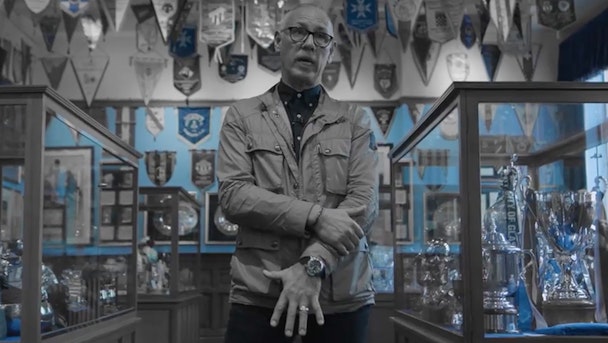As sponsorship evolves, sports marketing is no longer a game
Has sponsorship lagged behind other channels in sports marketing? Yes, says TrunkBBI’s managing director Adam Britton – but it doesn’t have to be that way. For The Drum’s Sports Marketing Deep Dive, Britton tells us where the evolving sponsorship space is headed next.

Sports sponsors, in football and beyond, face enormous opportunities / Image courtesy of TrunkBBI
As I sit in my seat at Villa Park watching my beloved Aston Villa, it’s not just Ollie Watkins’s missed opportunities that frustrate me. As a marketer, it irks me to see a vast array of sponsorships not working hard enough.
It isn’t only Villa’s sponsors that are guilty of this. Not even only the Premier League. It’s a global sporting issue.
Before the pandemic devastated the world of sports, the industry expected sponsorship spending to reach $48.4bn worldwide, outperforming the growth of traditional media channels. A behemoth figure, yet behind it lies some troubling statistics. More than 40% of marketers say sponsorship is the least understood channel regarding ROI; 25% have no confidence in measuring business returns.
And as our economic and political landscape continues to test businesses, marketing spend is always the first expense to fall under the proverbial spotlight.
So how can sports marketing protect its position as a vital part of a marketer’s playbook? We need to look beyond traditional shirt badging and pitch-side hoardings. It’s time to rethink how we activate opportunities and measure real impact.
Enriching experiences
The social disruption caused by the pandemic, twinned with generational changes, means that sports marketing must exist in a digital world. Fandom has shifted from large, localized audiences to remote communities that share experiences online.
According to Nielsen, a third of the population use social media while watching sports: 35% on apps and 20% while playing online games. These figures rise considerably for gen Z: 43%, 46% on apps and 31% playing games. This presents plenty of exciting opportunities for brands to take sponsorship out of the stadium, enriching viewers’ experience with the help of social media and creative tech.
This has proved a successful strategy for many brands. Clear’s sponsorship of the NBA Live app alongside programmatic display resulted in a 9.4% increase in sales, according to the Warc media awards. Likewise, Greene King’s ‘Summer of Sport’ games drove more than 1.1m plays through its socially-promoted season ticket app, earning a voucher redemption rate of over 70%.
Beyond awareness
Typically reserved for top-of-the-funnel awareness, businesses must now view sports sponsorship as a channel that can drive both long-term brand growth and short-term sales. Understanding this unlocks value in partnerships by creating a full-funnel, multi-channel strategy that transforms awareness into action.
Broad reach channels, including traditional media and digital platforms, are key. Marketers should supplement these with activation strategies including in-game trigger promotions, gamification or giveaways that lead to fan responses such as sign-ups. These activations create opportunities to follow up with consumers, nurturing them through the funnel and improving chances of sales. Long-form content series and reward programs build loyalty and advocacy.
A new generation of fans
The women’s Euro 2022 football tournament launch at the start of July shows a new generation of hungry fans filling stadiums across Uefa, Fifa and World Rugby.
Investment rose by 146%6 (2021 v 2020), highlighting how brands such as EE, Nike and Heineken are taking advantage of a broader demographic.
The rise of esports shows no signs of waning either. The competitive video game phenomenon has captivated more than 30% of global sports fans – more than Serie A. In 2021, over 2,250 sponsorship deals were publicly announced, an increase of 25% v 2020 according to Nielsen.
So, there are ample opportunities for collaborations beyond traditional sports. Consider also that many esports players have YouTube channels and Twitch accounts that build stronger audience connections than conventional endorsements.
Measuring ‘goals’
Rethinking sports sponsorships means reassessing how they’re measured. New methods and channels of engagement live in a data-rich digital ecosystem. It gives us access to insights that can drive performance, incorporating reactive content and metrics your marketing team can take to the boardroom.
The future
They say nothing is certain in sport. But we do know that the brands that look beyond shirt logos and instead start digitizing their sponsorships will overtake their competition. The addition of stadium 5G connections opens a world of opportunity for sponsors to engage audiences in and outside the ground. Think augmented reality (AR) treasure hunts, half-time fan quizzes and virtual stadium tours beamed straight into fans’ smartphones. Do it well and sponsors can look forward to building customer loyalty long after the final whistle.
Check out The Drum’s latest Deep Dive, The New Sports Marketing Playbook, and learn the tactics employed by the world’s biggest sports organizations and their star athletes to stay at the top of their game.
Content by The Drum Network member:

TrunkBBI
TrunkBBI is an award-winning integrated agency made up of 70 specialist thinkers, creators, analysts, influencers and technologists. Inspired by insights, we’re...
Find out more
